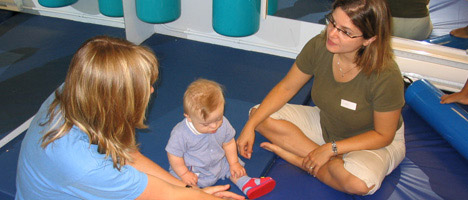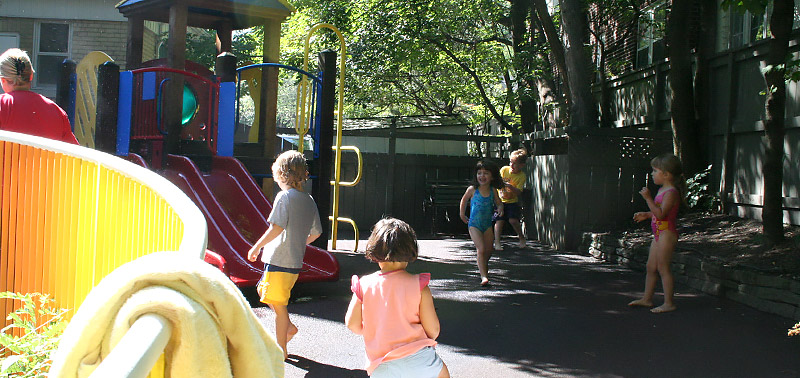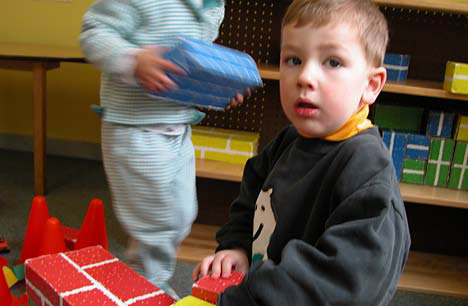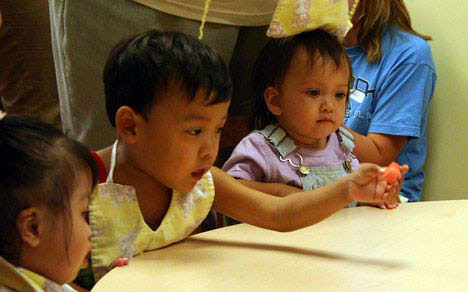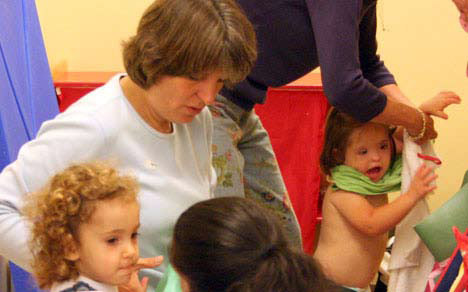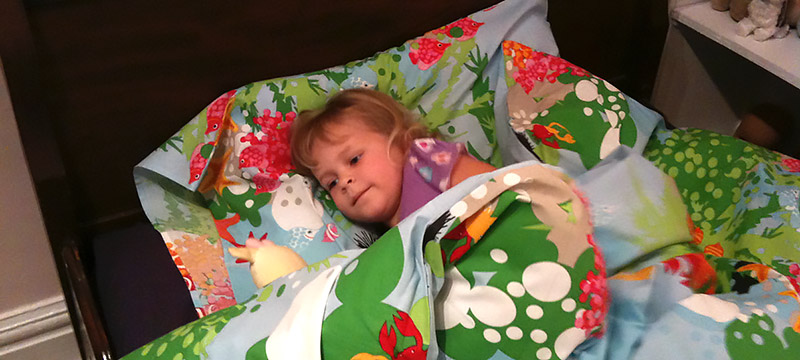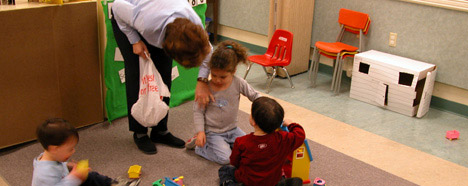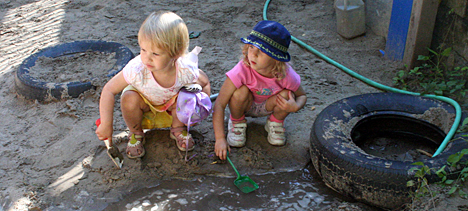
“It’s MINE!” We have all heard children scream this at one point or another. Young children often feel that a toy belongs to them just because they want it to. Children who are learning to share may become angry and frustrated when they cannot “get what they want.” They may show these feelings by grabbing items from other children or refusing to let go of toys.
Some children need extra support from adults when learning to share. As a parent, teacher or early childhood professional, you can do this by teaching your child which play materials belong to him, showing him how to share, and coaching him during play with other children. One of the best ways to show your child the benefits of sharing and working together is to have him participate in fun and co-operative activities he can enjoy.
Make Sharing Easier
Sharing Rules
Here are some simple sharing rules that can be put on a poster with pictures:
- Ask when you want to use something.
- Wait until someone is finished before you start using something.
- Help each other.
Introduce these rules by using puppets or dolls. You can also create a simple story involving a favourite cartoon character and how they share. Here is an example using “Bert” and “Ernie” from the television show “Sesame Street”:
Bert is using the scissors to cut a picture from the newspaper. Ernie wants to use the scissors. “Bert, can I use the scissors?” asks Ernie. “I am using the scissors right now. You can use the scissors when I am finished,” answers Bert. Ernie waits until Bert is finished. Bert hands Ernie the scissors and says, “Ernie, I am finished now.” “Thank you, Bert”, says Ernie.
You can replace the word “scissors” with a toy that your child likes. Praise him when he follows the sharing rules during activities with you or other children.
Special Toys
Your child may have a special stuffed animal that goes everywhere with him. He may rely on this toy for comfort and get very upset if another child shows interest in it. Most young children find it difficult to share their favourite toys. It may be a good idea to put away special toys in a specific place. At home he can put it in a bin in his room before friends come over to play. At the classroom or child care program, he can be encouraged to put the special toy away in the cubbie when coming in. It will be there when it’s time to go home.
Plan Activities
You can involve your child by allowing him to choose two or three activities that he would like to share with his friends.
Show him how to ask for, and pass, materials to another person. Here are some expressions you can teach him:
“I want”
- Point to object and show person the palm of his hand.
- Point to a picture of the object.
- Point to ‘want’ picture.
- Touch the object and say, “want”.

“Give”
- Pass object to person.
- Hold object in front of person and say “take” or “here”.

“Wait”
- Hold hand up like a stop sign.
- Point to “wait” picture.

“Finished”, or “All Done”
- Gesture finished by brushing hands together.
- Point to “finished” picture on visual schedule.

Here are some activities that are designed to help children share. Start by doing the activity with your child, then invite a friend to join in.
Sharing Bins
Sharing bins is a good way to structure activities for children who are beginning to share. It works best with activities where children need to share the materials, but can play on their own. Some examples include lego, blocks, cars, crayons, and clay or playdoh. Provide each child with a bin or small box with their photo or name on it. Put all the toys to be shared on the table or floor and allow the children to take turns adding toys to their bin. Each child plays with the toys in his bin. If they want to, they can trade toys with each other.
Paper Plate Pals
Provide each child with a paper plate to decorate. Place decorative craft materials such as feathers, pom poms, and yarn on several small plates for the children to share. To encourage children to pass items to each other, you can place the pom poms closer to one child and the yarn closer to the other. Glue, crayons, and markers can be placed in between the children. Providing only one of a particular material such as one glue bottle, or a limited amount of scissors also creates a situation where children need to wait to use the item. It also provides an opportunity for the children to ask each other for the item when another child is using it.
Better Together!
Here are some everyday activities that will encourage your child and the children he is playing with to co-operate and work together. If the children have trouble sharing, you can support them by reminding them of any rules you have created. Praise and encourage them when you see them sharing and co-operating. Here are some examples:
- “Liz, I like how you are helping Juan make a tunnel.”
- “Sherry, it was nice of you to give Billy a napkin.”
- “Chris and Matt, I like how you are sharing the cars.”
Cooking
Cooking is an excellent way to promote sharing and have fun. Children can help create the snack, eat, and clean up! You can set up the activity like a production line so each child has a special job to do. For example, if you are making a pizza your child can spread the sauce, his friend can add the cheese and both can add the vegetable toppings. At the child care program you can provide each child with their own bowl and wooden popsicle stick for mixing. Have a separate “teacher” bowl for the main mixture. While their hands are busy you can invite each child to have a turn mixing the teachers bowl.
Gardening
This is a great way to teach children about science and gives them a chance to get messy! You will need a few plastic pots, some soil, seeds, and a few spoons or toy shovels. Try growing plants such as beans that sprout quickly indoors. One child can make a hole in the dirt while the other puts the seed in. As the plant grows, children can take turns watering it.
Sandbox
Playing the sandbox provides a great deal of opportunity for sharing and cooperating. Encourage your child to play in the sandbox and share the pails, shovels, balls, and toy cars while they build castles, roads, or whatever they dream up together!
Tips for Parents:
Label Toys
You can teach your child the concepts of “mine”, “yours”, and “ours” by clearly showing what belongs to him, what belongs to other people and what is shared. An easy way to do this is to buy a sheet of identical stickers and stick one on each of your child’s toys. Name each toy as you go along. You can say, “This truck belongs to Ishmael,” or “Ishmael’s truck”. Encourage your child to join in by attaching stickers and repeating your words. If your child takes toys to a friend’s house, school or child care program, the stickers will remind him which ones he can take home with him and which ones he must leave behind.
If you have more than one child at home, you might have a rule that some toys are for everybody to share but some toys belong to just one person. In the play area, put the shared toys together on several shelves. Place each child’s toys in a separate box or bin labeled with their name and photograph. Toys can be labeled with each child’s name or a small sticker to avoid arguments. For example, Nina’s toys have a red sticker on them and Freddy’s toys have a yellow sticker on them. The child needs to ask his brother or sister before using a toy that does not belong to him.

